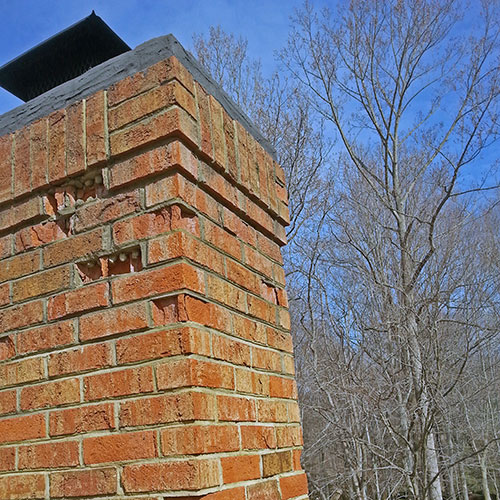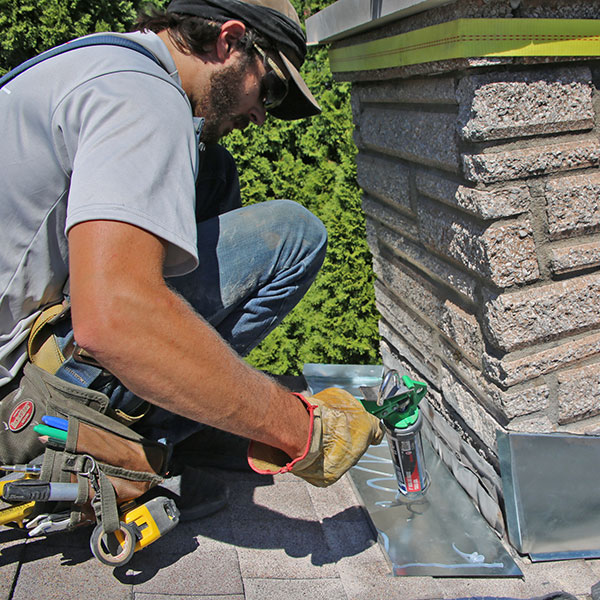Cold Weather and Your Chimney
While homeowners are enjoying a warm and relaxing fireplace fire, the cold weather outside is having an impact on the chimney system. Masonry chimneys are constructed with porous materials, and the cold and wet winter weather can accelerate its normal deterioration. The cold outside air can also affect the air pressure inside the home and the chimney draft, which can cause a dangerous backdraft.
The Stack Effect
The stack effect is a common cold-weather phenomenon that can affect your chimney. It is caused when there is a significant temperature difference between the cold air outside the home and the warmer temperature inside the chimney. As the fireplace’s low-pressure heat rises, it is replaced with high pressure cold external air coming through the fireplace to fuel the fire. Gaps or damage to the masonry can also allow more cold air to enter the chimney. The denser cold air cools down the chimney faster than the heat can warm it, creating negative air pressure. The negative air pressure can reverse the chimney draft known as a backdraft, which forces the smoke-filled air and soot down the chimney and out the fireplace. Slightly opening a window or door will equalize the air pressure.
 Freeze-Thaw Cycle
Freeze-Thaw Cycle
The freeze-thaw cycle that occurs during cold weather is damaging to masonry chimneys, especially here in Wisconsin, where we often see freezing temperatures at night and above-freezing temperatures during the day. The porous bricks and mortar will absorb winter rain. When the temperature drops at night, the absorbed moisture freezes, and the ice crystals cause cracks in the masonry. The rising temperature in the afternoon thaws the ice-filled bricks and mortar, which fill up with water the next time it rains, repeating the freeze-thaw cycle. The compounding damage erodes the mortar and causes bricks to flake, chip, and crumble, leaving gaps in the joints. Without intervention, the chimney structure will continue to weaken and eventually collapse.
Flue Obstructions
Flue obstructions are also likely to occur during the winter. Birds, squirrels, raccoons, and other small animals are always looking for a warm place to rest and will climb into an open flue. Windy days and winter storms can also blow leaves, twigs, and other debris into the flue. Soot and creosote build-up can also restrict the airflow. When the flue is partially or entirely blocked, smoke and exhaust can’t completely vent out the chimney and backs up in the living space exposing occupants to dangerous carbon monoxide fumes.
 Leaky Chimney
Leaky Chimney
Many homeowners experience a leaky chimney during the wet and cold winter season. The rain, sleet, snow, and ice can damage the masonry, chimney cap, chimney crown, and flashing allowing water to leak inside the chimney. Once water gets inside, it can cause significant damage to the interior walls, flue liner, and firebox. Chimney leaks can also corrode and rust the damper. Damaged chimney flashing can also impact the roof, attic, and ceiling.
Preparing Your Chimney for Cold Weather
Scheduling a professional chimney inspection and cleaning is the best way to prepare your chimney for cold weather. If any deficiencies are discovered, your Certified Chimney Professional will recommend the necessary repairs to protect your chimney and safely operate your fireplace or heating stove. The chimney technician may recommend waterproofing, top-sealing dampers, and glass fireplace doors.







